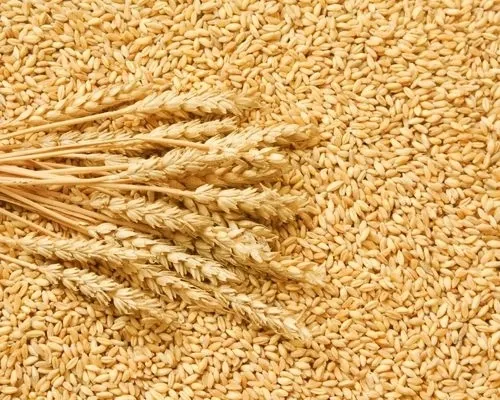Wheat: A Globally Significant Staple Crop...!!!
Wheat is one of the world's most vital staple crops, providing essential nutrition to billions of people. As a versatile and widely cultivated grain, wheat has played a pivotal role in human history, agriculture, and the economy.

History of Wheat
Wheat's history is extensive and dates back to ancient civilizations. It is believed to have originated in the Fertile Crescent, encompassing modern-day Iraq, Syria, and Turkey. Archaeological evidence indicates that wheat was first domesticated around 10,000 years ago, marking the advent of agriculture and the establishment of settled communities.
Throughout history, wheat has been a crucial crop for numerous cultures and civilizations. It was a staple food in ancient Egypt, Greece, and Rome and played a significant role in developing early agricultural societies. The spread of wheat cultivation across Europe, Asia, and eventually the Americas was driven by trade, exploration, and colonization.
Types of Wheat
There are several types of wheat, each with unique characteristics and uses. The two primary categories are:
-
Common Wheat (Triticum aestivum): Also known as bread wheat, this is the most widely cultivated type. It is used to produce a variety of products, including bread, pastries, and noodles. Common wheat can be further divided into hard and soft varieties based on protein content and texture.
-
Durum Wheat (Triticum durum): Known for its high protein content and hard texture, durum wheat is primarily used to make pasta, semolina, and couscous. It is grown in regions with dry climates, such as the Mediterranean and North America.
Other types of wheat include spelt, emmer, and einkorn, which are ancient grains that have been cultivated for millennia. These grains are gaining popularity for their unique flavors and nutritional benefits.
Cultivation of Wheat
Wheat is grown in diverse climates and regions, making it highly adaptable. The cultivation process involves several stages:
-
Soil Preparation: Farmers prepare the soil by plowing and adding fertilizers to ensure it is fertile and suitable for planting.
-
Sowing: Wheat seeds are sown either by broadcasting (scattering seeds) or drilling (placing seeds in rows). The timing of sowing depends on the climate and variety of wheat. In temperate regions, wheat is typically sown in the fall (winter wheat) or spring (spring wheat).
-
Growth: The wheat plant goes through several growth stages, including germination, tillering (producing additional shoots), and heading (forming seed heads). Adequate water and nutrient supply are essential for healthy growth.
-
Harvesting: Wheat is harvested when the grain is fully mature and the moisture content is low. Harvesting is typically done using combine harvesters, which cut, thresh, and clean the grain.
-
Processing: After harvesting, the wheat grain is cleaned, dried, and stored. It may undergo further processing, such as milling, to produce flour and other products.

Nutritional Value of Wheat
Wheat is a rich source of essential nutrients, making it a critical component of the human diet. It provides carbohydrates, the primary source of energy, as well as protein, dietary fiber, vitamins, and minerals. Key nutrients found in wheat include:
-
Carbohydrates: Wheat is primarily composed of carbohydrates, providing energy for the body. The complex carbohydrates in wheat are digested slowly, providing a steady release of energy.
-
Protein: Wheat contains protein, including gluten, which gives dough its elasticity and strength. Protein is essential for building and repairing tissues.
-
Fiber: Wheat bran is a good source of dietary fiber, aiding in digestion and promoting a healthy gut.
-
Vitamins: Wheat is rich in B vitamins, including thiamine, riboflavin, niacin, and folate, which play a crucial role in energy metabolism and overall health.
-
Minerals: Wheat provides essential minerals such as iron, magnesium, phosphorus, and zinc, important for various bodily functions.
Uses of Wheat
Wheat is an incredibly versatile grain with a wide range of uses. Some of the most common include:
-
Flour: Wheat is ground into flour, used to make bread, cakes, pastries, pasta, and other baked goods.
-
Cereal Products: Wheat is used to produce breakfast cereals, such as wheat flakes, bran cereals, and granola.
-
Animal Feed: Wheat and its by-products are used as feed for livestock, providing essential nutrients for animals.
-
Industrial Uses: Wheat is used in various industrial applications, including biofuel production, adhesives, and biodegradable plastics.Conclusion
Wheat is a globally significant staple crop with a rich history, adaptability, nutritional value, and versatility. It remains a cornerstone of agriculture and human diet. As demand for wheat continues to grow, sustainable farming practices and innovations in wheat production will be essential to ensure food security and meet the needs of a growing population.
What's Your Reaction?

















